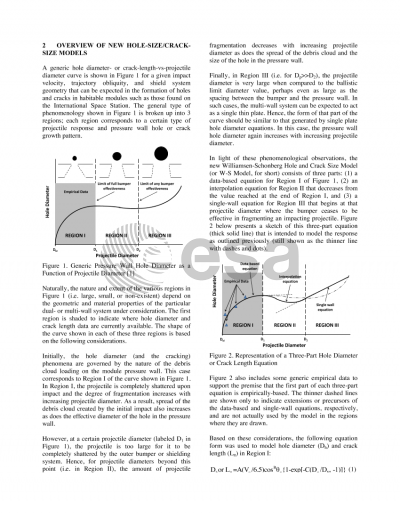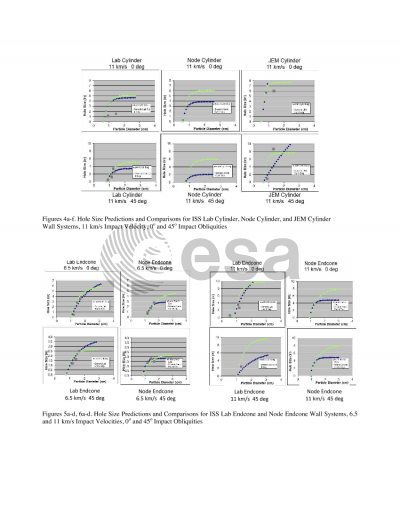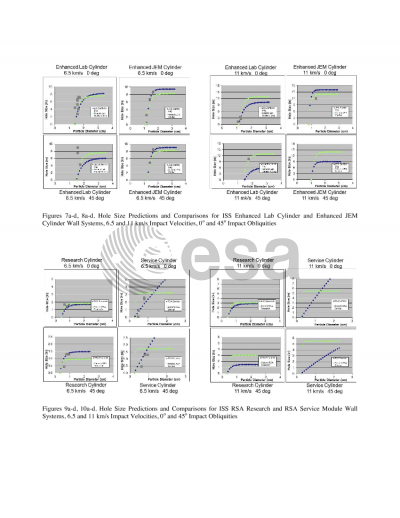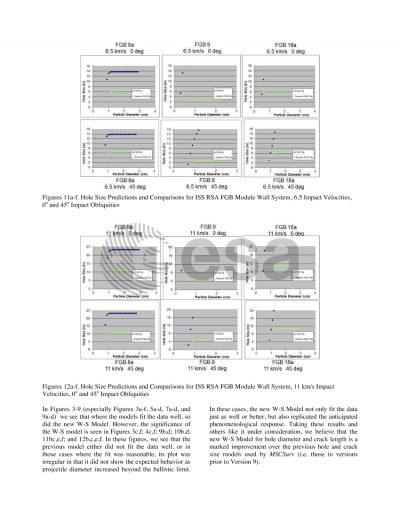Document details

Abstract
In the early 1990 NASA engineers developed a tool that would allow them to determine what percentage of ISS penetrations resulting from on-orbit impacts by micrometeoroid and orbital debris particles might be survivable. These efforts resulted in the development of the MSCSurv computer code to determine the overall probability of no catastrophic failure of the ISS or its crew due to impacts by these particles over the lifetime of the ISS. As part of this calculation, MSCSurv first determines the size of the holes and cracks caused by any penetrations for the different ISS wall configurations. In light of the significant role played by module wall hole size and crack length calculations in survivability assessments, new hole-size and crack-length models were recently developed that were more realistic and improved fits to hole size and crack data. However, the hole and crack sizes predicted by these new models may be unrealistically large when both orbital debris and meteoroid models are considered. In this paper we review the new hole and crack size models and present additional supporting results to reinforce their versatility and utility. We also examine the particle velocity distribution of NASA's current meteoroid environment model as compared to that of its orbital debris model. Some possible approaches at capping the hole and crack sizes predicted by our models are then discussed.
Preview









